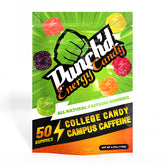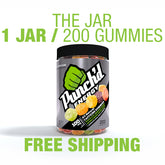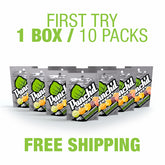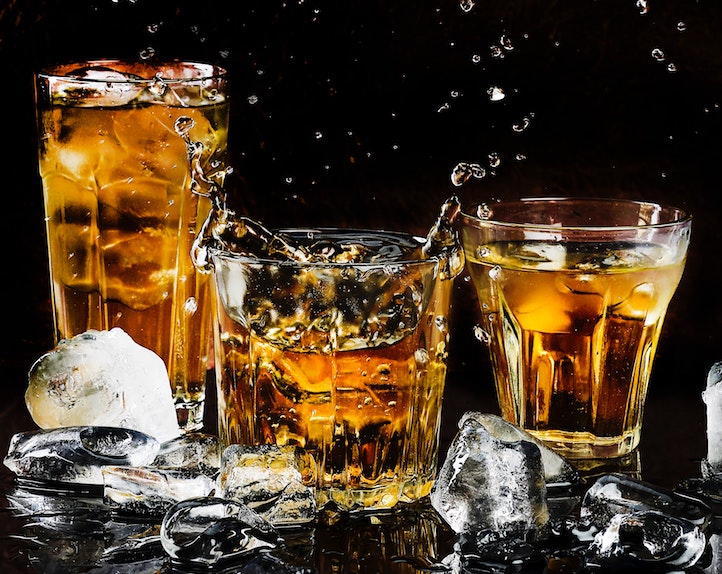How a Routine of Daily Pick-Me-Ups Has United People Throughout History
From coffee to soda to caffeine pills, stimulants are an integral part of our lives.
Why? For one thing, they keep us alert. They also elevate our moods and make us feel happier — even if just for a short amount of time.
But ours is not the first society to embrace that buzz. Far from it: Cultures around the world have spent millennia cultivating energizing plants and creating rituals around their consumption.
Read on to learn why we as a species find stimulants so irresistible — and how different people have introduced pick-me-ups into their daily lives.
Coca and Coca-Cola
Coca-Cola is perhaps the best-known in the world. It’s also one of the most addictive drinks in our culture — one that hooked humans on soda over a century ago.
At the heart of this irresistible drink is coca. The coca plant has been used by South American societies to relieve pain and promote relaxation since the ninth millennium BCE, says National Geographic writer Ariadna Baulenas i Pubill.
But these properties aren’t what made Coca-Cola so popular. “Scientific studies of coca’s medicinal properties have found that its leaves contain a powerful alkaloid that acts as a stimulant,” Baulenas i Pubill writes. “Its effects include raised heart rate, increased energy and even suppression of hunger and thirst.”
When Spanish conquistadors arrived in the 16th century, they adopted the cultivation of the crop and began to export and sell coca around the world. From the coca museum in La Paz, Bolivia, curator and owner Dr. Jorge Hurtado Gumucio explains how coca created an economic transformation: “Many researchers indicate that at a given time during the Colony, the price of coca leaves was such that they were used instead of gold and silver. Poma de Ayala maintains that the Spanish conquerors changed it into a form of payment.”
In a sad irony, Baulenas i Pubill notes how the conquistadors also encouraged the indigenous peoples they enslaved to consume coca because it made them more productive.
Fast forward to the 19th century, when North Americans were experimenting with coca’s potential health benefits. Freelance science and technology writer Richard Stockton explains how the origins of Coca-Cola can be traced back to the 1870s, when Confederate Col. John Pemberton sought a cure for his morphine addiction. After hearing about a French drink that contained cocaine, he created his own cure-all tonic.
This initial batch contained alcohol, an ingredient that was cut from the recipe as the American Temperance movement gained steam, Stockton writes. “Pemberton reformulated his product into a non-alcoholic beverage and kept right on selling it — although, by 1888, the recipe contained only around nine milligrams of cocaine, which is about one-tenth the usual recreational dose.”
Cocaine was finally removed from the product in 1903, but the drink retained the syrupy, sugary and caffeinated properties that so many people around the world still enjoy today.

Khat Leaves and Tea
Societies in Africa and the Middle East have been casually selling and chewing khat leaves for hundreds of years. Consumed as casually as many cultures drink coffee, the khat shrub provides immediate feelings of euphoria, alertness and elation, says psychologist and professor Dr. Elizabeth Hartney.
This is because khat leaves contains two mild stimulants: cathinone and cathine. While khat is illegal in the USA, Canada and most of Europe, it is legal in parts of Australia and African countries (minus South Africa and Eritrea). Today, an estimated 10 million people chew khat regularly, according to author and clinical pharmacologist Jeffrey K. Aronson.
Khat’s origins are often traced back to Ethiopia, explains African travel expert Anouk Zijlma. Khat can be likened to tea or coffee, and its leaves are sometimes steeped in water and brewed as a tea. Chewing the leaves directly, however, offers a much more potent dosage of cathinone and cathine.
Khat’s long-term effects can be dangerous. The increased mental stimulation caused by khat can lead to aggression, violence, suicidal ideation, anxiety, manic behaviors and insomnia, according to Sunrise House Addiction Centers in New Jersey.
Consumption can also lead to negative cardiovascular effects like increased heart rate, tachycardia, increased blood pressure, heart arrhythmia, heart attack or stroke. Still, the immediate, pleasurable effects of khat help it remain popular across the globe.
Energy Drinks and Guarana
Whether its before work, after a long night out or during a three-day bender, Americans consume a ton of energy drinks. Guarana, a plant native to the Amazon, is the leading ingredient in many energy drinks. Guarana is known to fight fatigue, boost mental cognition and promote weight loss, says nutrition specialist and journalist Cathy Wong.
The alertness associated with guarana consumption is just one reason why so many people rely on energy drinks. Wong points to a study that suggests guarana may be able to improve decision-making performance “without destabilizing autonomic nervous system regulation” to the degree that caffeine alone does.
Guarana does contain high amounts of caffeine, though. As dietician Toby Amidor explains, guarana has double the amount of caffeine as standard coffee. He adds that guarana isn’t well-regulated, meaning that its quality can vary greatly.
“Its extract and berries haven't been tested by the FDA to determine safety, effectiveness or purity. There is no regulated standard in place for manufacturers, so you’ll find varying amounts of guarana used in supplements and beverages.”
This means it’s possible — easy, even — to go overboard with guarana, just as it is with caffeine.

Energy Drinks and Alcohol
A history of stimulating drinks wouldn’t be complete without some mention of alcohol. The duo of alcohol and energy drinks has become a nightlife staple around the world, which means many party-goers continue drinking stimulants late into the night.
A long drink of vodka and an energy drink emerged in the early 2000s and quickly gained popularity across the club and rave scene. The addition of caffeine helped people get tipsy without feeling drowsy, enabling them to stay up late into the night. Energy drink manufacturers didn’t directly market this "cocktail" its consumers, well-aware of the associated health risks.
A few years later saw the rise of Four Loko, an alcohol-based energy drink sold for a short period of time in convenience stores and gas stations across America. The drink peaked in 2010 before being pulled from stores by the FDA, says Vox writer Kaitlyn Tiffany. That year, the company earned more than $100 million in sales. The original Four Loko contained the highest amount of alcohol allowed in a malt beverage (12 percent alcohol) as well as caffeine.
Mixing alcohol with caffeine can lead to increased instances of poor decision-making and injury. Repeatedly consuming this mixture can also cause “unique behavioral and neurochemical effects” that aren’t influenced by caffeine or alcohol alone, according to a 2016 study by Meridith T. Robins, Julie Lu and Richard M. van Rijn. The study also found that exposure to these drinks during adolescence may alter or escalate instances of future substance abuse.
Being Selective About How You Get Your Own Boost
While there’s nothing wrong with seeking a daily boost, it’s important that these energy sources aren’t doing more harm than good. Understanding where these substances come from — and why they’re such a strong part of our culture — can help you make wiser choices that benefit your mind and body.
Images by: Prem Pal Singh, Isabella Bedo, Chris F








